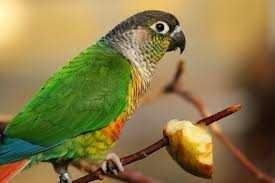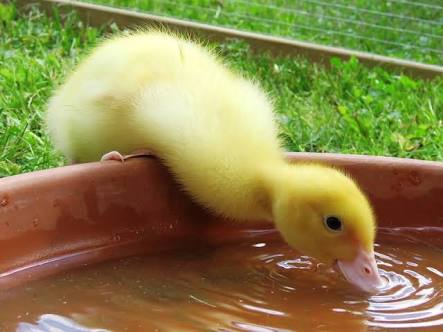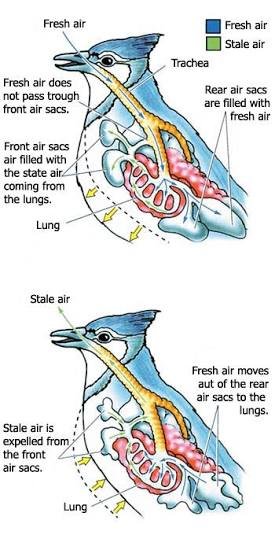BIRDS --- THE SCIENCE BEHIND WHY BIRDS DRINKS WATER AND DON'T URINATE
This is a question I ask my self everyday, why don't they urinate?
But they have digestive system as other animals,and they also drink water, why is their case different??
URINATION: This is the process in which urine is removed from the bladder and also expelled out of the body, it is known as the excretory process.
DOES BIRD HAS BLADDER?? Ostrich are exception to this.
Yes bird has bladders but they lack the two(2) different output orifices, what they have is just the cloaca but they have kidney which is one of the fundamental requirement for urination.
they do not urinate: the kidney filters blood and produces a waste –of high uric acid but low urea content– that ends up in the coprodeum, where it mixes with faeces from the digestive tract. The result is a rather liquid pasty mash of whitish appearance, which is expelled from the cloaca. The mixture is rich in nitrogen and phosphates, so it is a good fertilizer, and can be used as manure (as is the case of guano). Click

Animals needs to get rid of the remaining nitrogen after breaking down into protein
, But mammals convert theirs into urea before expelling it out as urine but birds converts theirs into uric acid with the help of chamber called cloaca : is where digestive wastes, uric acid, and eggs or sperm go before leaving the body of a bird.
They have the ability to absorb back some of the water while the uric acid is in the cloaca, which helps them in the conservation of water, even some sea birds excretes salt water from their gland close to their eyes.
.png)
"Birds don't have full bladder in order to fly"
Birds, like all animals, have to get rid of their nitrogenous wastes somehow.When animals digest proteins and other nitrogen-containing compounds, one of the waste products is ammonia, which is toxic. Ammonia is so toxic, in fact, that it has to be kept pretty dilute in order to protect the animal. So the simplest solution is to excrete lots and lots of very dilute urine with ammonia in it. This is what lots of aquatic animals do, since they don't have to conserve water. Mammals, for the most part, don't have access to an unlimited supply of water, so don't want to have to urinate gallons and gallons of ammonia every day. Instead, we convert the ammonia to the slightly less toxic compound urea.
We can concentrate urea more than ammonia, so we can urinate less and conserve water.
Reptiles and birds, on the other hand, convert ammonia to uric acid, which is even less toxic than urea. In fact, uric acid doesn't need any water at all -- they can excrete it as a solid and conserve as much water as possible. If you've ever had the good fortune to take a good look at bird droppings, you've probably noticed that they tend to have black chunks (the feces) in a white pasty substance. This white stuff is mostly the uric acid. If you want some bonus vocabulary to impress your friends, here goes: ammonia-excreting animals are 'ammonotelic', mammals and anything else that uses urea are 'ureotelic', and the birds and reptiles are 'uricotelic.' click
They excrete their urines by crystallizing urine along with their feces and excrete it through a pathway called the cloaca and their always in a mix form which makes it pasty.

.jpeg)
THE EXCRETORY SYSTEM OF A BIRD
.jpeg)
A bird always have two kidneys and each of them has a ureter that carries the urine produced by body to the cloaca before it is finally expelled out of their body.
A bird becomes debilitated when the kidney are damaged or diseased , which causes frequent death among them.
importance of excretory system a bird
- It helps in maintaining the water balance
- It helps in the elimination of metabolic wastes especially nitrogen products except (carbon dioxide)
- It helps in balancing the electrolytes
the kidneys
A domestic fowl has a two reddish-brown kidneys, each generally with three (3) lobes are usually found immediately behind the lungs on each sides of the vertebral column.
There is also a relatively straight narrow tube called the ureter which leaves the medial border of each of the kidney and opens into the cloaca, always adjacent to the deferent duct of the male or the oviduct of the female bird. The ureter is connected to many funnel shaped structures from each lobe of the kidney.

On close inspection the kidney consists of the renal cortex and the renal medulla.
read more by clicking here
REFERENCES
.jpeg](https://steemitimages.com/DQmYBXt5wX3W5UAFN4hoFeLCW6WgqDe6XoDnsStc9y2NuWV/images%20(18).jpeg))
)